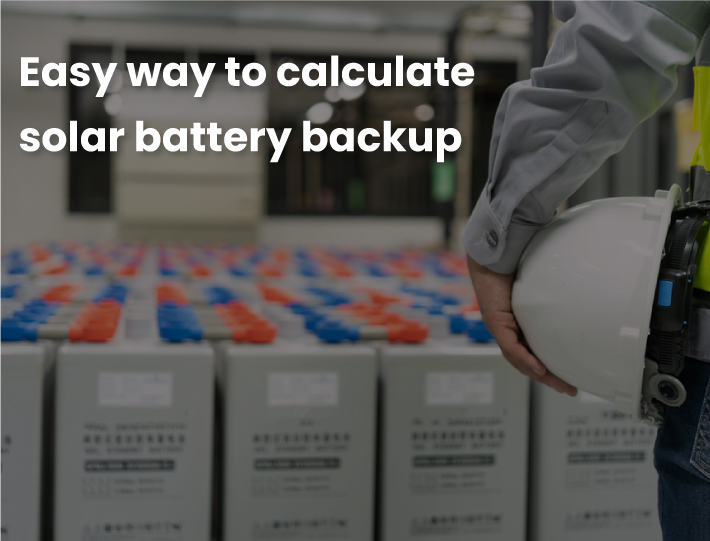Easy Way to Calculate Solar Battery Backup
Getting the right solar battery backup isn’t just about how much power you need and how much you can afford to spend on it. It’s also about making sure your solar battery solutions last as long as possible and that you don’t end up having to replace the batteries too soon. Here are the steps to follow to ensure that your system runs at its best with the longest possible lifespan.
Understand Your Solar Power Usage
What size battery do you need? To understand how much power your household or business consumes, you need to look at your electric meter. Write down how many kilowatt-hours (kWh) of energy you use per month. Divide that number by 1,000 and multiply it by 12 months for a rough idea of how much energy your home uses in a year. Multiply that number by 2 if you plan on using your solar battery for summer usage during sunny months.
Important Factors to Consider:
â— Battery Capacity & Power
The first factor to consider when calculating how many batteries are needed is simply their capacity in ampere-hours. The higher your energy usage, or power requirements, will determine how many batteries you need.
â— Amp-hour
Ampere-hour (Ah) is a unit of electric charge. It is equal to Coulomb per second, that is the amount of electric charge passed through a point in an electrical circuit over time. Charge measured in amp-hours is also referred to as accumulator capacity or more often just as amp-hours.
â— Depth of Discharge
There are two key things that you need to know about your batteries; their Amp-Hour rating, and their Depth of Discharge (DoD). To understand why these two items are important, we first need to take a look at how a battery works. Deep cycle batteries utilize lead-acid technology, which causes them to experience a phenomenon called Sulfation. Sulfation occurs when crystals grow on the positive and negative plates inside your battery.
â— Battery Working Temperature
The best solar battery system in Australia has a wide range of working temperatures, from -5 °C ~ to 60 °C. The best storage temperature is around 25°C, with a relative humidity of 70%~80%. Generally speaking, it’s better not to store the battery at over 35°C for a long time. If you can ensure an ideal storage environment as described above, your lead-acid batteries could work safely for more than 15 years.
Solar battery calculation: step by step
If you want to know how long your batteries will last in a blackout, all you need is two things:
1) The total amount of power your home uses over a given period and
2) The amount of power generated by your solar system in that same period. Once you have these two figures, it’s easy to plug them into an online calculator and get an idea of how much time your batteries can provide backup power.
From there, it’s pretty straightforward—with more panels or bigger batteries (if you’re looking at upgrading) you can extend that time window even further.
Conclusion
Calculating how much power your solar panels can produce is easy. Simply multiply the number of watts of each panel by its voltage, and then add up all panels together. This will give you an accurate idea of how much power your solar battery solutions are producing in total at any given time and whether it's enough for your needs. If not, you may need a larger system or extra batteries.

